
Are you tired of dealing with dishwasher detergent caking issues? Don’t worry, we’ve got you covered! In this article, we will provide you with troubleshooting tips to help you tackle this frustrating problem. Say goodbye to globs of detergent residue on your dishes and get ready to enjoy sparkling clean results every time. Let’s get started!
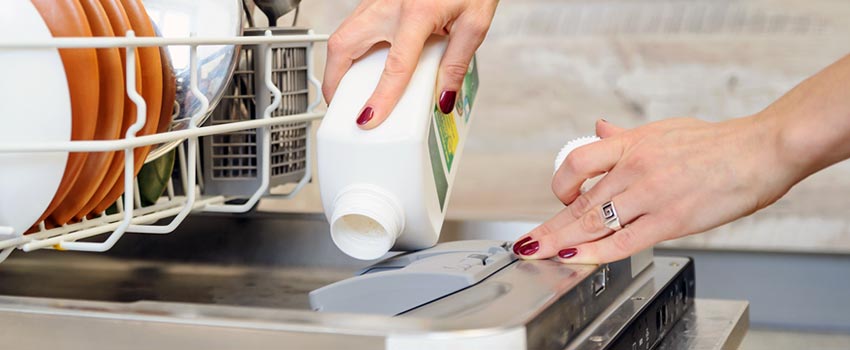
This image is property of www.repairaid.co.uk.
Check the Water Temperature
Ensure the Water is Hot Enough
To effectively clean your dishes and remove any buildup, it is important to ensure that the water temperature in your dishwasher is hot enough. The ideal water temperature for a dishwasher is between 120 and 125 degrees Fahrenheit (49 to 52 degrees Celsius). This temperature allows the detergent to dissolve properly and efficiently clean your dishes.
To check the water temperature, you can use a thermometer specifically designed for measuring water temperature. Simply run your dishwasher as you normally would and insert the thermometer into the water during the wash cycle. If the water temperature falls within the recommended range, you can proceed with the next steps. However, if the water temperature is too low, you may need to adjust your water heater settings.
Adjust the Water Heater
If you find that the water temperature in your dishwasher is consistently too low, adjusting your water heater settings can help solve the issue. Before making any adjustments, it is important to consult the manufacturer’s instructions for your water heater and follow their recommended guidelines.
In most cases, you can adjust the temperature of your water heater by turning the thermostat knob or dial. Gradually increase the temperature setting and allow the water heater to reach the new temperature before retesting the water temperature in your dishwasher. Monitor the temperature closely to ensure it falls within the ideal range of 120 to 125 degrees Fahrenheit (49 to 52 degrees Celsius).
Evaluate the Rinse Aid Level
Check for Sufficient Rinse Aid
Rinse aid is an essential component in ensuring your dishwasher performs optimally and prevents detergent caking issues. It helps to prevent water droplets from forming on your dishes, ensuring they dry evenly and without any spots or streaks. When the rinse aid level is low, it can lead to poor performance and detergent caking problems.
To check the rinse aid level, locate the rinse aid dispenser in your dishwasher. It is typically located near the detergent dispenser. Open the dispenser and check the level of rinse aid inside. If it is below the recommended level or empty, it is important to refill it to ensure proper dishwasher function.
Adjust the Rinse Aid Dispenser
If you find that your rinse aid level is consistently low, you may need to adjust the rinse aid dispenser settings. Different dishwasher models have different settings for the dispenser, so it is important to consult your dishwasher’s user manual or contact the manufacturer for specific instructions.
In some cases, adjusting the dispenser dial to a higher setting can help ensure an adequate amount of rinse aid is dispensed during each cycle. Experiment with different settings and monitor the rinse aid level to find the optimal setting for your dishwasher.
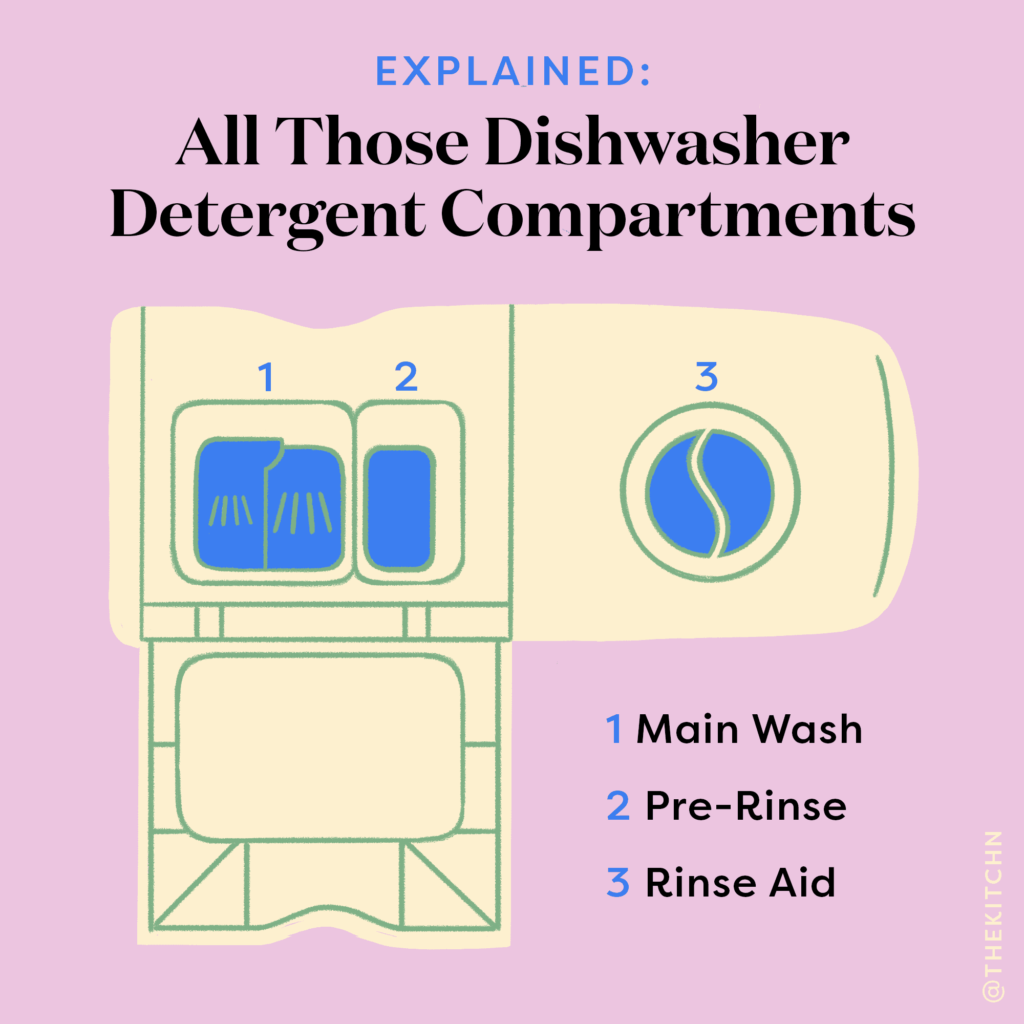
This image is property of cdn.apartmenttherapy.info.
Examine the Dishwasher Load
Avoid Overcrowding
One common mistake when loading a dishwasher is overcrowding the dishwasher racks. It may be tempting to fit as many dishes as possible into a single load, but this can lead to poor cleaning performance and detergent caking issues. When dishes are overcrowded, water and detergent cannot reach all parts of the dishes, resulting in incomplete cleaning and residue buildup.
To avoid overcrowding, make sure to leave enough space between dishes, especially those with larger surfaces. This will allow water to flow freely and ensure proper cleaning. Also, avoid stacking dishes on top of each other, as this can also hinder water and detergent penetration.
Arrange Dishes Properly
In addition to avoiding overcrowding, arranging your dishes properly is crucial for efficient cleaning and preventing detergent caking. This means positioning dishes, glasses, and utensils in a way that allows water and detergent to reach all surfaces. Taller items should be placed in the lower rack, while smaller items can go on the upper rack.
Plates and bowls should be positioned facing the center of the dishwasher, where the spray arm is located. Make sure to angle them slightly to prevent water from pooling. Utensils should be evenly distributed in the utensil basket to ensure they are thoroughly cleaned. Take the time to arrange your dishwasher load carefully, and you will notice improved cleaning performance and reduced detergent caking issues.
Inspect the Dishwasher Spray Arm
Clean the Spray Arm
The dishwasher spray arm is responsible for distributing water and detergent throughout the dishwasher during the wash cycles. Over time, it can become clogged with food particles, minerals, or detergent residue. This can lead to poor water flow and ineffective cleaning performance, resulting in detergent caking on your dishes.
To clean the spray arm, start by removing it from the dishwasher. Consult your dishwasher’s user manual for specific instructions on how to remove the spray arm, as the process may vary depending on the model. Once removed, rinse the spray arm under running water to remove any visible debris.
If there are stubborn clogs, you can use a toothpick or small brush to gently remove the blockages. Avoid using sharp or abrasive objects that could damage the spray arm. Once the spray arm is clean, reattach it to the dishwasher and ensure it spins freely.
Check for Damage or Blockage
In addition to cleaning the spray arm, it is important to inspect it for any signs of damage or blockage that may affect its performance. Look for cracks, splits, or worn-out nozzles that could cause water to spray unevenly. If you notice any damage, it may be necessary to replace the spray arm to ensure optimal cleaning results.
Also, check the spray arm for any blockages that may not be visible to the naked eye. Use a toothpick or small brush to clear any debris that may be obstructing the spray arm’s openings. Removing any blockages will help to improve water flow and prevent detergent caking issues.
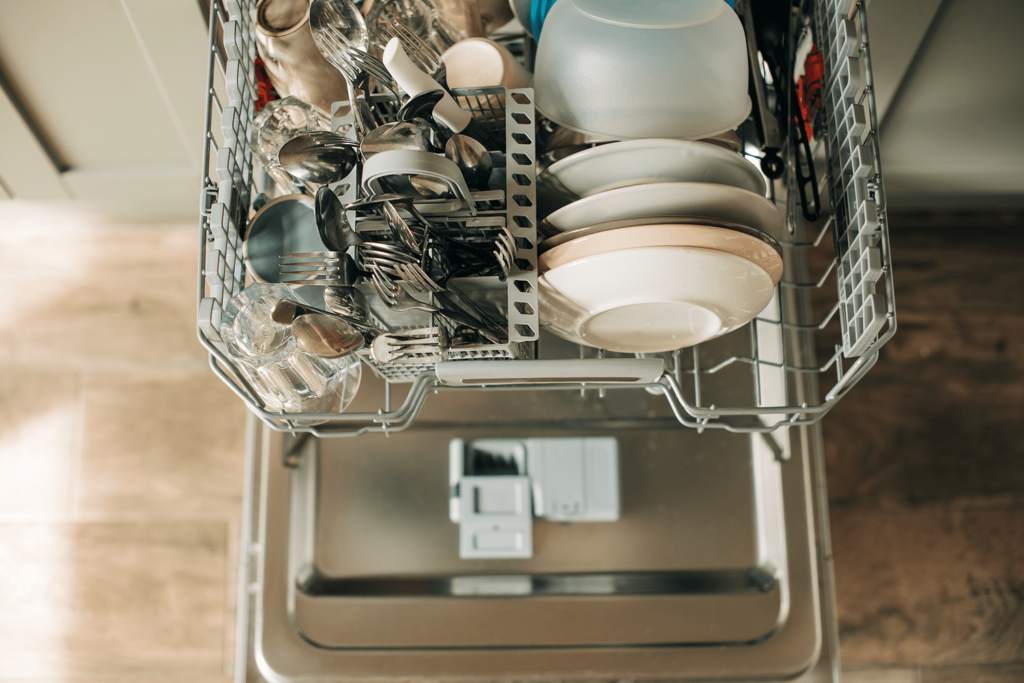
This image is property of www.allrecipes.com.
Review the Dishwasher Filter
Clean or Replace the Filter
The dishwasher filter plays a crucial role in removing food particles and debris from the water as it circulates through the dishwasher. Over time, the filter can become clogged with food scraps and residue, leading to poor water drainage and detergent caking problems.
To clean the dishwasher filter, consult your dishwasher’s manual for the specific location of the filter and the recommended cleaning procedure. In most cases, the filter can be removed by unscrewing it or lifting it out. Rinse the filter under running water to remove any debris and use a brush or toothbrush to scrub away stubborn residue.
If your dishwasher has a disposable filter, it may need to be replaced periodically instead of cleaned. Again, refer to your dishwasher’s manual for the replacement instructions and recommended frequency.
Consider Water Hardness
Test the Water Hardness
Water hardness refers to the concentration of minerals, such as calcium and magnesium, in your water supply. Hard water can affect dishwasher performance and contribute to detergent caking. If you live in an area with hard water, it may be necessary to take steps to address the issue.
To test the water hardness, you can use a water hardness test strip, which is readily available at most home improvement stores or online. Follow the instructions provided with the test strip to determine the hardness level of your water. The test strip will typically change color based on the mineral concentration, allowing you to determine whether your water is hard or soft.
Use Water Softener if Needed
If your water hardness level is high, it is recommended to use a water softener in your dishwasher to prevent detergent caking and improve cleaning performance. Water softeners are additives designed to reduce the mineral content in your water, making it softer and more suitable for use in your dishwasher.
There are various types of water softeners available, including salt-based and salt-free options. Consult your dishwasher’s manual or contact the manufacturer for specific recommendations on the type and amount of water softener to use. Follow the instructions provided with the water softener product to ensure you achieve the desired results.
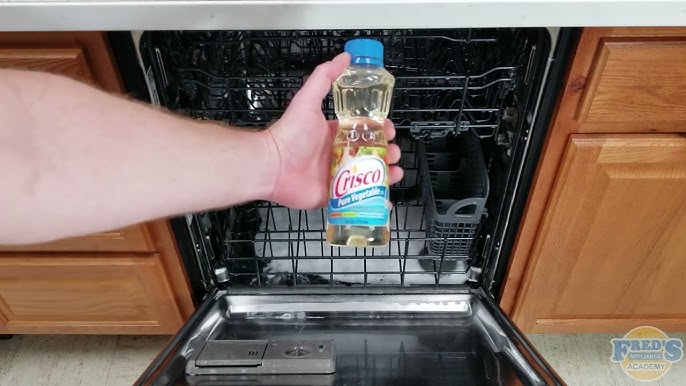
This image is property of i.ytimg.com.
Evaluate Detergent Quantity
Measure the Detergent Properly
Using the correct amount of detergent is essential for achieving clean dishes without detergent caking. Too much detergent can result in residue buildup, while too little may not provide adequate cleaning power. It is important to follow the manufacturer’s instructions for your specific dishwasher detergent and adjust the quantity to suit your dishwasher’s needs.
If your dishwasher has a dispenser, refer to the markings on the dispenser to determine the appropriate amount of detergent. In general, a tablespoon or two of detergent is sufficient for most dishwasher loads. However, it is always best to consult the manufacturer’s instructions for optimal results.
Choose the Right Detergent
Use the Appropriate Detergent Formula
Using the right detergent formula for your dishwasher is crucial to prevent detergent caking issues. The type of detergent you choose should be compatible with your dishwasher and water hardness level. There are several types of dishwasher detergents available, including powder, liquid, and pod detergents.
Consult your dishwasher’s manual or contact the manufacturer for specific recommendations on the detergent formula to use. Some dishwasher manufacturers may recommend certain brands or types of detergents that work best with their machines. Following these recommendations can help ensure optimal cleaning performance and reduce the chances of detergent caking.
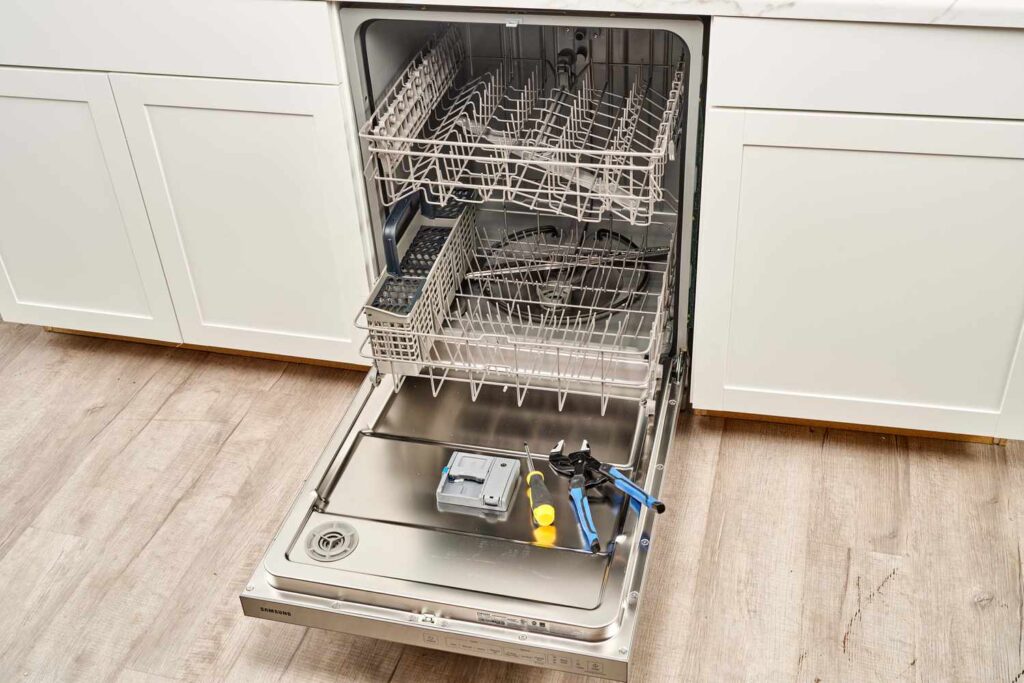
This image is property of www.thespruce.com.
Avoid Powder Detergent
Switch to Liquid or Pod Detergent
If you are experiencing detergent caking issues, one solution may be to switch from powder detergent to a liquid or pod detergent. Powder detergents are more prone to caking, especially when the water temperature is not hot enough or when other factors are not optimized.
Liquid and pod detergents tend to dissolve more easily in water, providing a more consistent distribution of detergent during the wash cycle. This can help reduce the chances of detergent residue buildup and improve overall cleaning performance.
Before making the switch, consult your dishwasher’s manual or contact the manufacturer to ensure that liquid or pod detergents are compatible with your dishwasher model. Follow the manufacturer’s instructions for proper usage and dosage.
Check the Dishwasher Performance
Inspect for Possible Malfunctions
If you have tried all the troubleshooting steps mentioned above and are still experiencing detergent caking issues, it may be necessary to inspect your dishwasher for possible malfunctions. There could be underlying mechanical or electrical problems that are affecting the dishwasher’s performance and leading to detergent caking.
Inspect the dishwasher’s components such as the pumps, hoses, and valves to ensure there are no leaks or blockages. Check the control panel for any error codes or malfunction indicators. If you notice any unusual sounds or odors during operation, these may also indicate a problem.
Call for Professional Assistance
If you are unable to identify or resolve any malfunctions on your own, it is recommended to call for professional assistance. A qualified dishwasher technician will be able to diagnose and repair any issues that may be affecting your dishwasher’s performance. They have the expertise and tools to troubleshoot and resolve problems efficiently and effectively.
By following these troubleshooting tips and implementing the necessary adjustments, you can overcome detergent caking issues in your dishwasher. Remember to prioritize regular maintenance, proper loading techniques, and the use of suitable detergent and additives. With a well-maintained dishwasher, you can enjoy clean, spotless dishes without the frustration of detergent residue.





